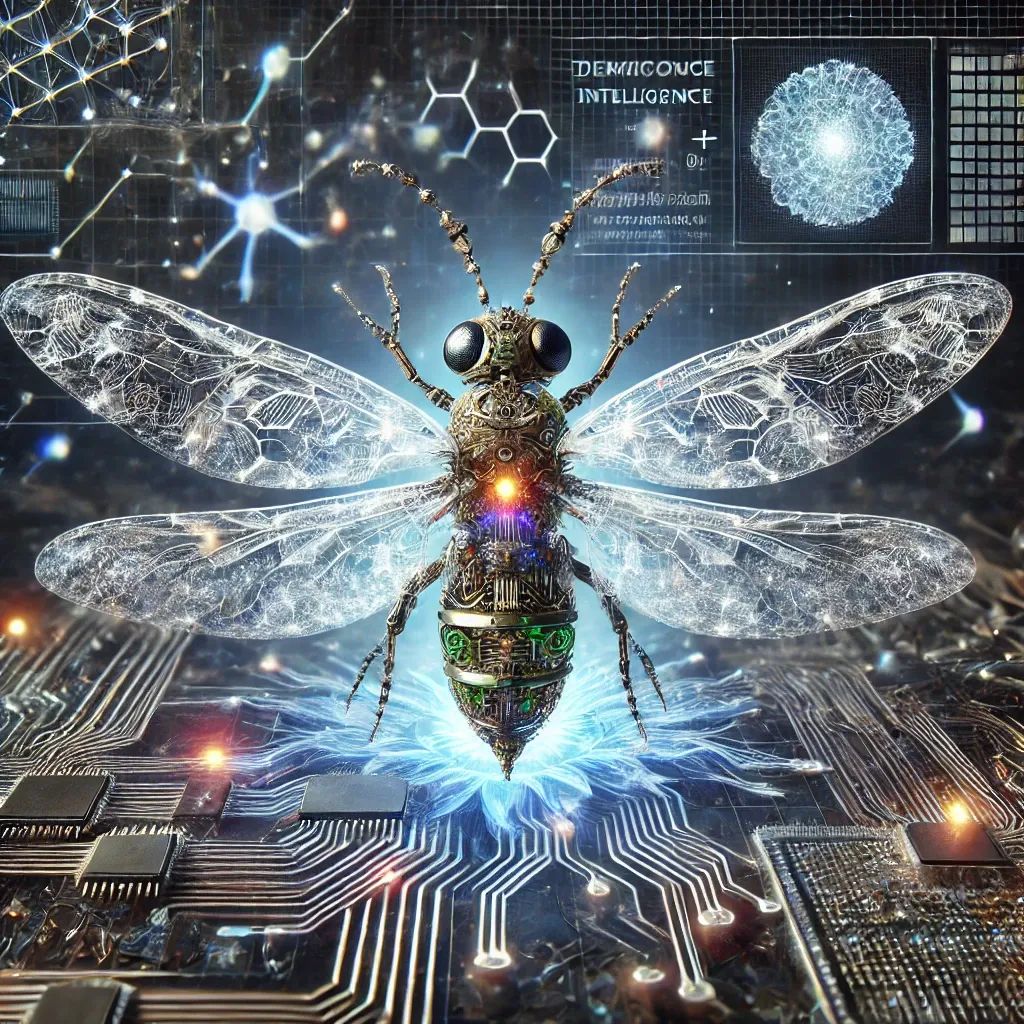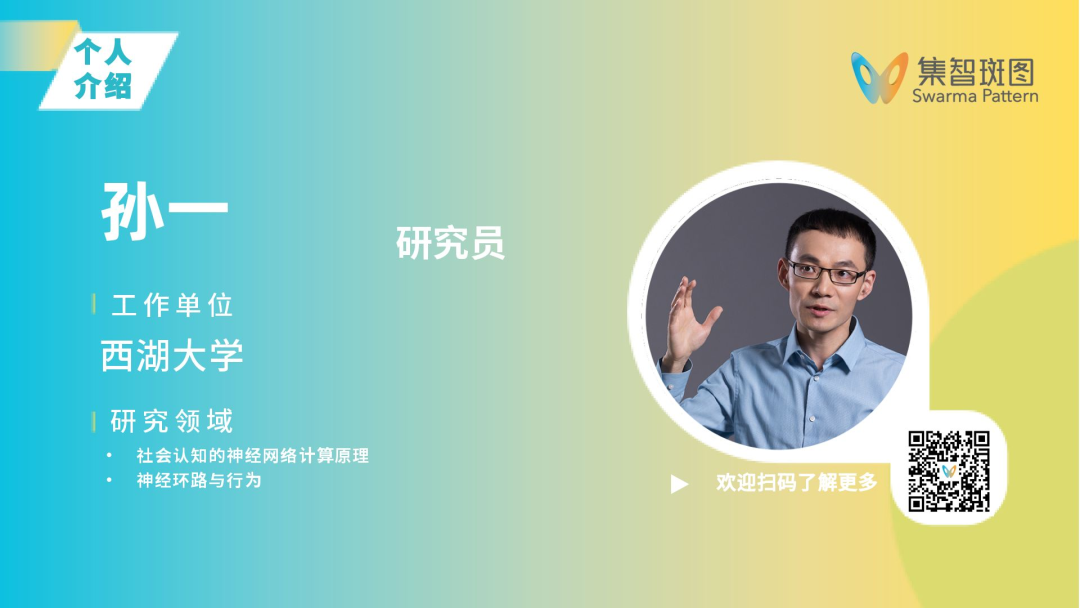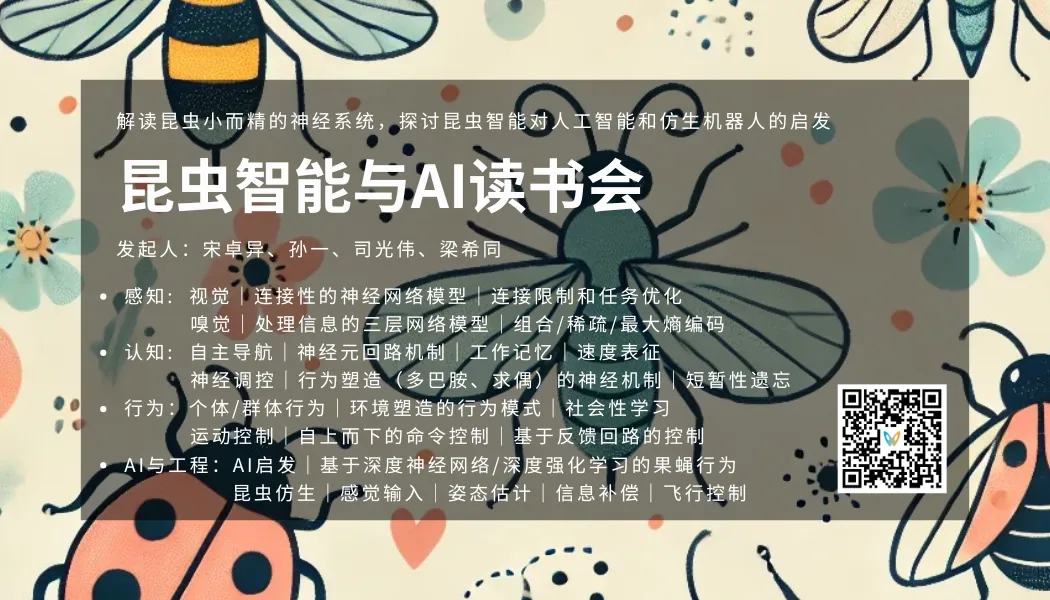
导语


背景
背景
昆虫大脑虽然仅有数十万神经元(小型哺乳动物约一亿),却可以通过有效编码环境信息产生复杂的智能感知行为,如捕食与自主导航等。我们认为,研究昆虫等小型模式生物的神经信息处理机制,可以启发轻量化的智能算法或系统。
简介
简介
本次分享宋卓异老师将结合课题组的科学研究说明研究昆虫的神经信息处理机制能为仿生智能带来什么,简要介绍这方面的三个探索:
1)光感受器为什么会有10个数量级大的感受范围,其自适应的动力学与分子机制是什么?
2) 视网膜神经元微跳视可以帮助生物在复杂环境进行超分感知吗 – 基于视网膜仿真系统的研究;
核心概念
核心概念
自适应 - 动力学与分子机制
微跳视与超分感知
大纲
大纲
一、光感受器大动态范围感光与四个随机自适应采样机制
二、视网膜仿真系统,神经元微跳视,与其超分感知的研究
三、基于连接组的神经环路模型与动态环境防碰撞检测的神经环路机制
主讲人
主讲人

拟邀圆桌嘉宾
拟邀圆桌嘉宾






直播信息
直播信息

参考文献
参考文献
1、Stochastic, adaptive sampling of information by microvilli in fly photoreceptors Z Song, M Postma, SA Billings, D Coca, RC Hardie, M Juusola Current Biology 22 (15), 1371-1380 2、Microsaccadic sampling of moving image information provides Drosophila hyperacute vision M Juusola, A Dau, Z Song, N Solanki, D Rien, D Jaciuch, SA Dongre, ...Elife 6, e26117 3、Refractory sampling links efficiency and costs of sensory encoding to stimulus statistics Z Song, M Juusola Journal of Neuroscience 34 (21), 7216-7237 4、Analytical refractory period distribution for a class of time-variant biochemical systems with second-order reactions C Rao, W Lin, Z Song The Journal of Chemical Physics 159 (12) 5、Looming detection in complex dynamic visual scenes by interneuronal coordination of motion and feature pathways B Gu, J Feng, Z Song Advanced Intelligent Systems, 2400198 6、Modelling the mechanoreceptor's dynamic behaviour Z Song, RW Banks, GS Bewick Journal of anatomy 227 (2), 243-254
昆虫智能与AI读书会招募中
昆虫智能与AI读书会招募中

详情请见:昆虫智能如何启发人工智能与仿生机器人?昆虫智能与AI读书会启动
内容中包含的图片若涉及版权问题,请及时与我们联系删除




评论
沙发等你来抢